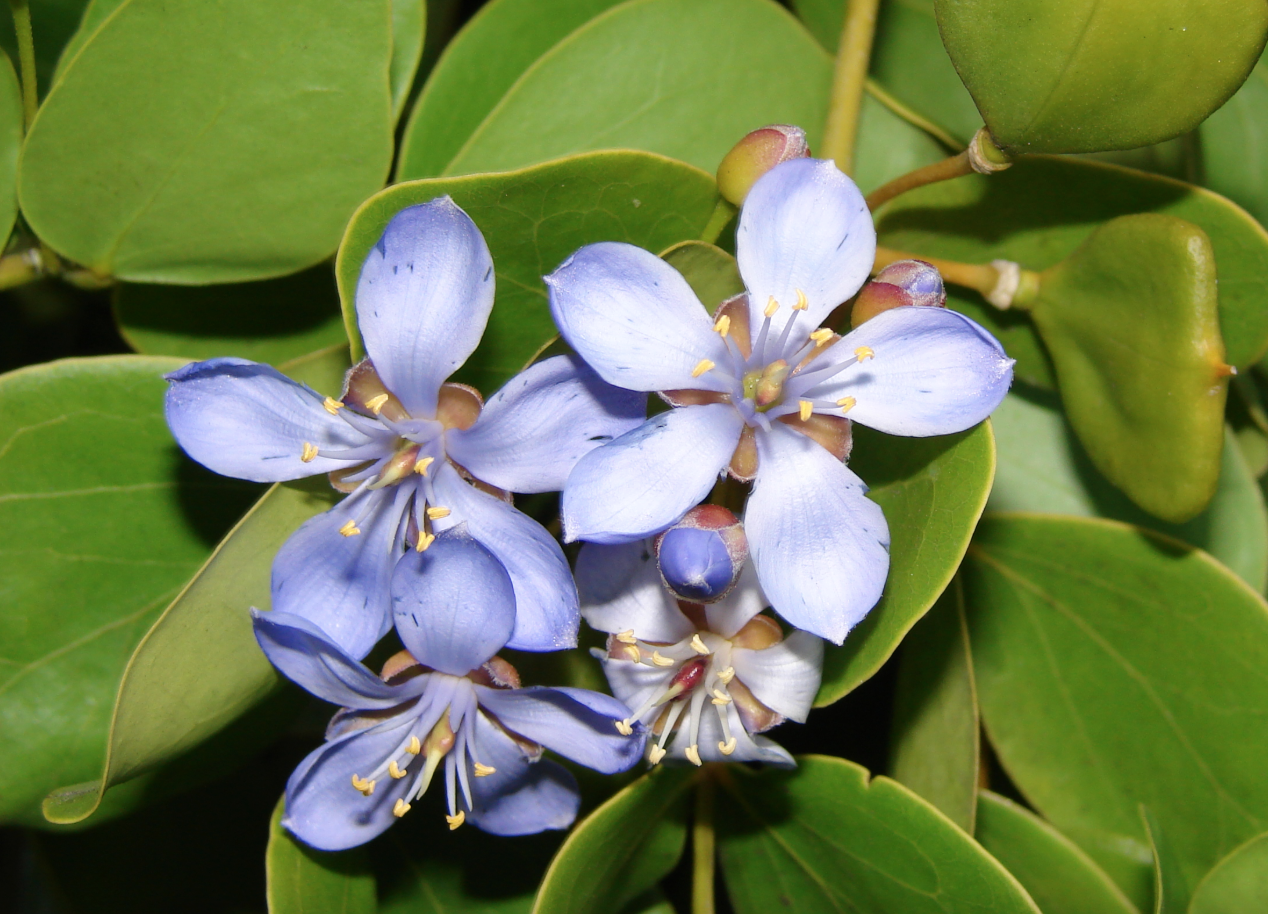Synonyms:
Guaiacum Wood, Lignum Guaiaci, Lignum Vitae
Botanical source:
Guaiacum consists of the wood (both heartwood and sapwood) of Guaiacum officinale Linn. and Guaiacum sanctum Linn. of the family Zygophyllaceae.
Geographical Source of Guaiacum
Guaiacum officinale is a native of the West Indian Islands and South America and Guaiacum sanctum grow naturally in Florida and Bahamas. They are also found in Cuba and Haiti.

Image Source: Forest & Kim Starr
Macroscopical Characters:
Logs of Guaiacum are very hard, heavy and compact. The central heartwood is dark greenish brown and the surrounding sapwood is yellowish brown in colour. The outer surface is either smooth or furrowed. The wood has a density of 1.16 to 1.4 and splits very irregularly. It has a slight aromatic odour and an acrid taste.
Microscopical Characters:
There are numerous fine, straight medullary rays in the wood. Vessels occur singly or in groups of two or three. They are very wide and extend from one medullary ray to the next; their lumen is often filled with masses of yellowish resin. The xylem fibres which form the bulk of the wood are very thick walled and wavy longitudinally. Xylem parenchyma is scanty and is scattered irregularly or in small bands. The medullary rays are uniseriate and 3 to 5 cell high. Prisms of calcium oxalate and occasionally starch grains occur in some parenchymatous cells and some cells of the medullary rays.
Chemical Constituents:
The heartwood contains 20 to 25 percent of resin. It also contains guaiacsaponic acid and guaiacsaponin, which are present in larger quantity in the sapwood. Guaiacgluttin is also present in Guaiacum.
Uses:
Guaiacum is using in sore throat for its local stimulant action. The resin is used in chronic gout and rheumatism. The wood has been used with Sarsaparilla as an altcrative in syphilis.
